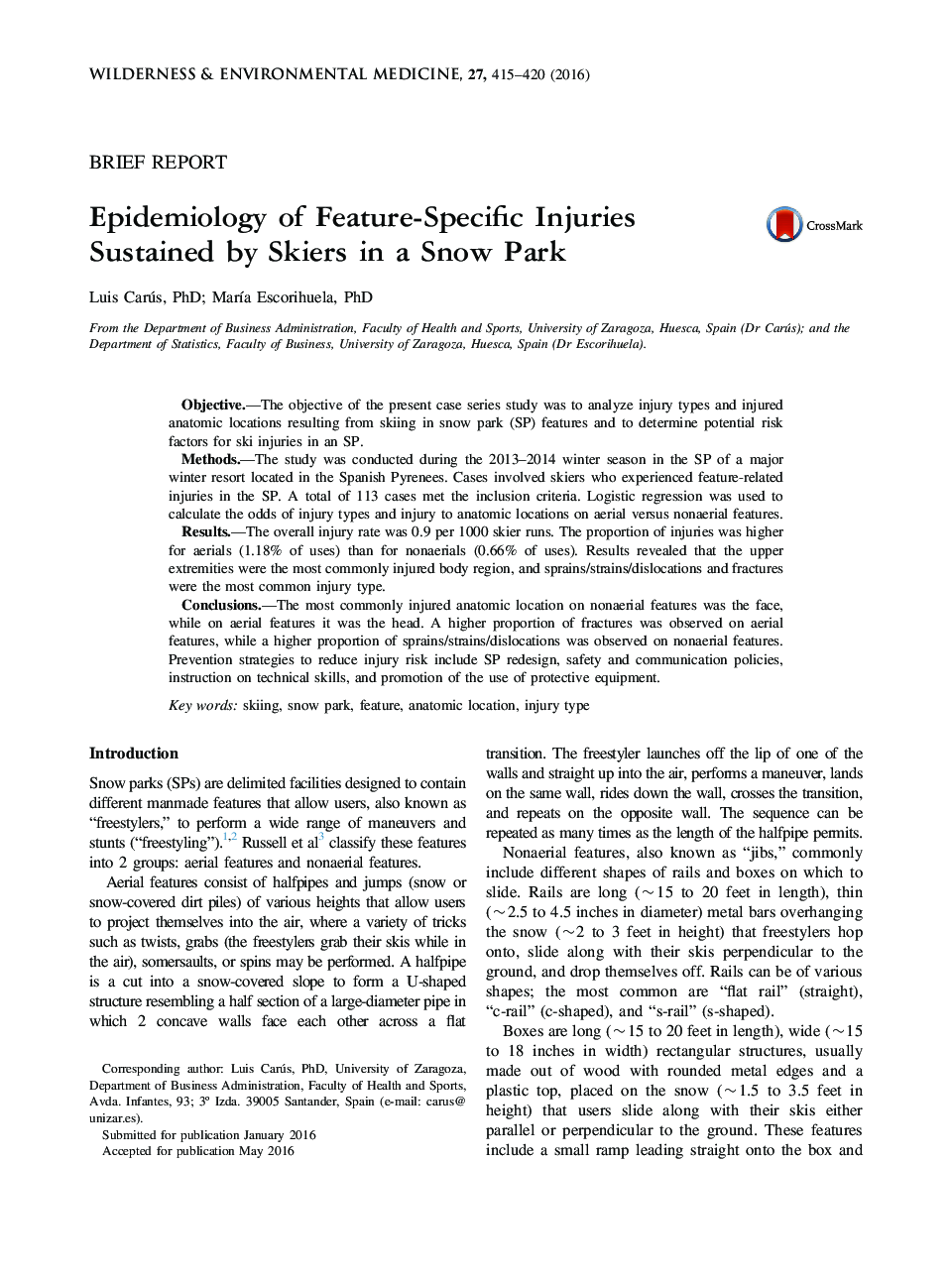| Article ID | Journal | Published Year | Pages | File Type |
|---|---|---|---|---|
| 2614501 | Wilderness & Environmental Medicine | 2016 | 6 Pages |
ObjectiveThe objective of the present case series study was to analyze injury types and injured anatomic locations resulting from skiing in snow park (SP) features and to determine potential risk factors for ski injuries in an SP.MethodsThe study was conducted during the 2013–2014 winter season in the SP of a major winter resort located in the Spanish Pyrenees. Cases involved skiers who experienced feature-related injuries in the SP. A total of 113 cases met the inclusion criteria. Logistic regression was used to calculate the odds of injury types and injury to anatomic locations on aerial versus nonaerial features.ResultsThe overall injury rate was 0.9 per 1000 skier runs. The proportion of injuries was higher for aerials (1.18% of uses) than for nonaerials (0.66% of uses). Results revealed that the upper extremities were the most commonly injured body region, and sprains/strains/dislocations and fractures were the most common injury type.ConclusionsThe most commonly injured anatomic location on nonaerial features was the face, while on aerial features it was the head. A higher proportion of fractures was observed on aerial features, while a higher proportion of sprains/strains/dislocations was observed on nonaerial features. Prevention strategies to reduce injury risk include SP redesign, safety and communication policies, instruction on technical skills, and promotion of the use of protective equipment.
